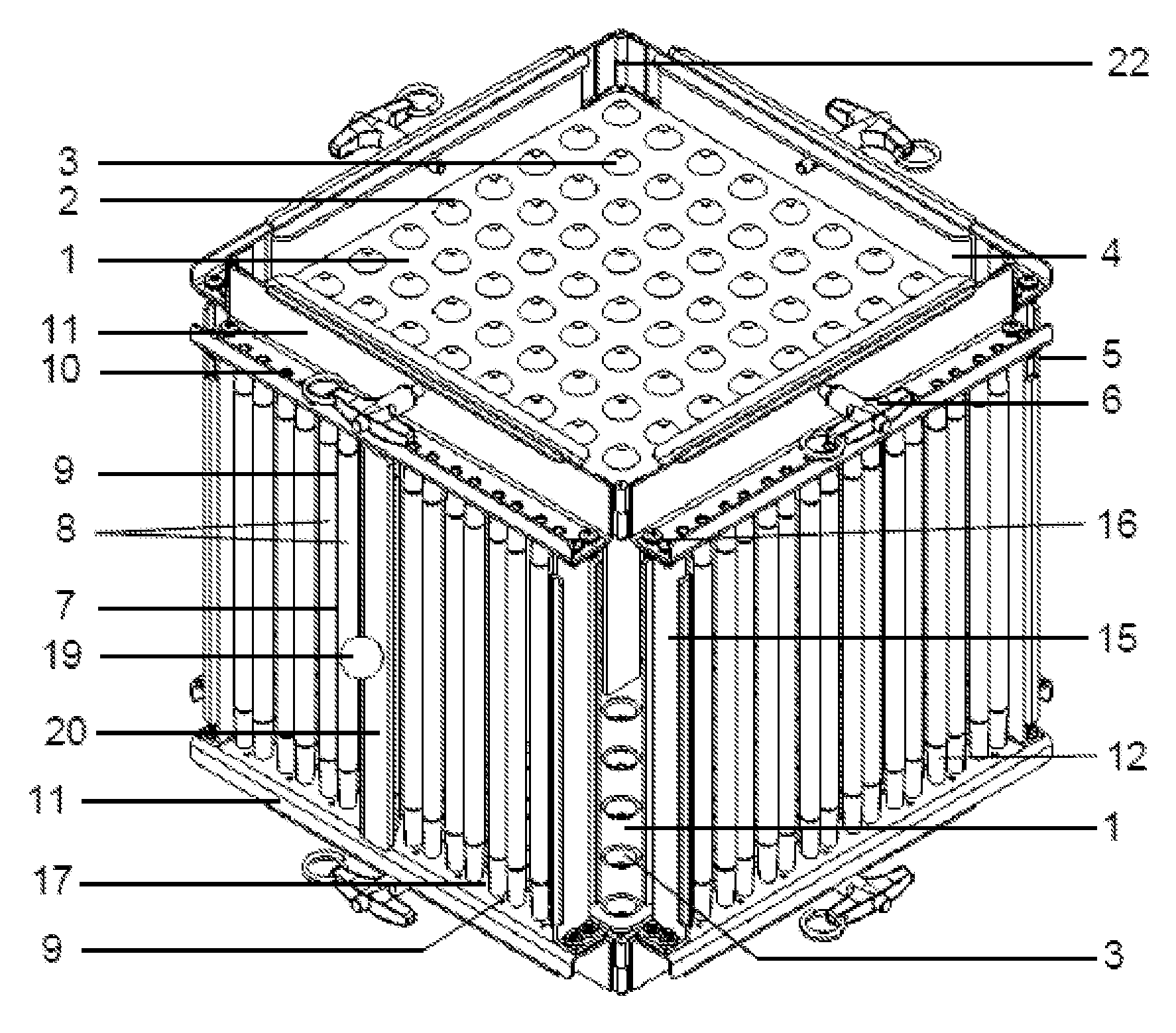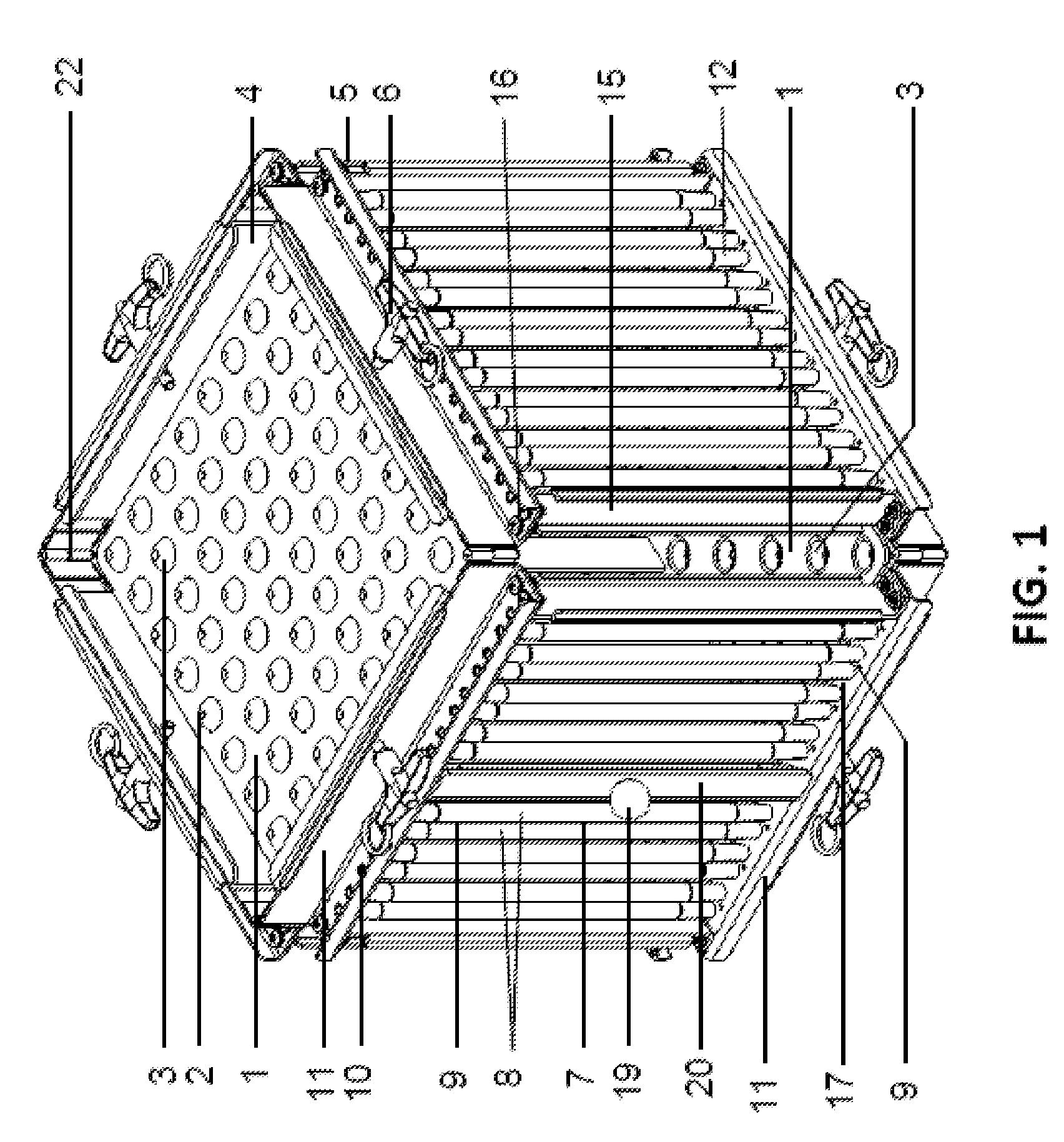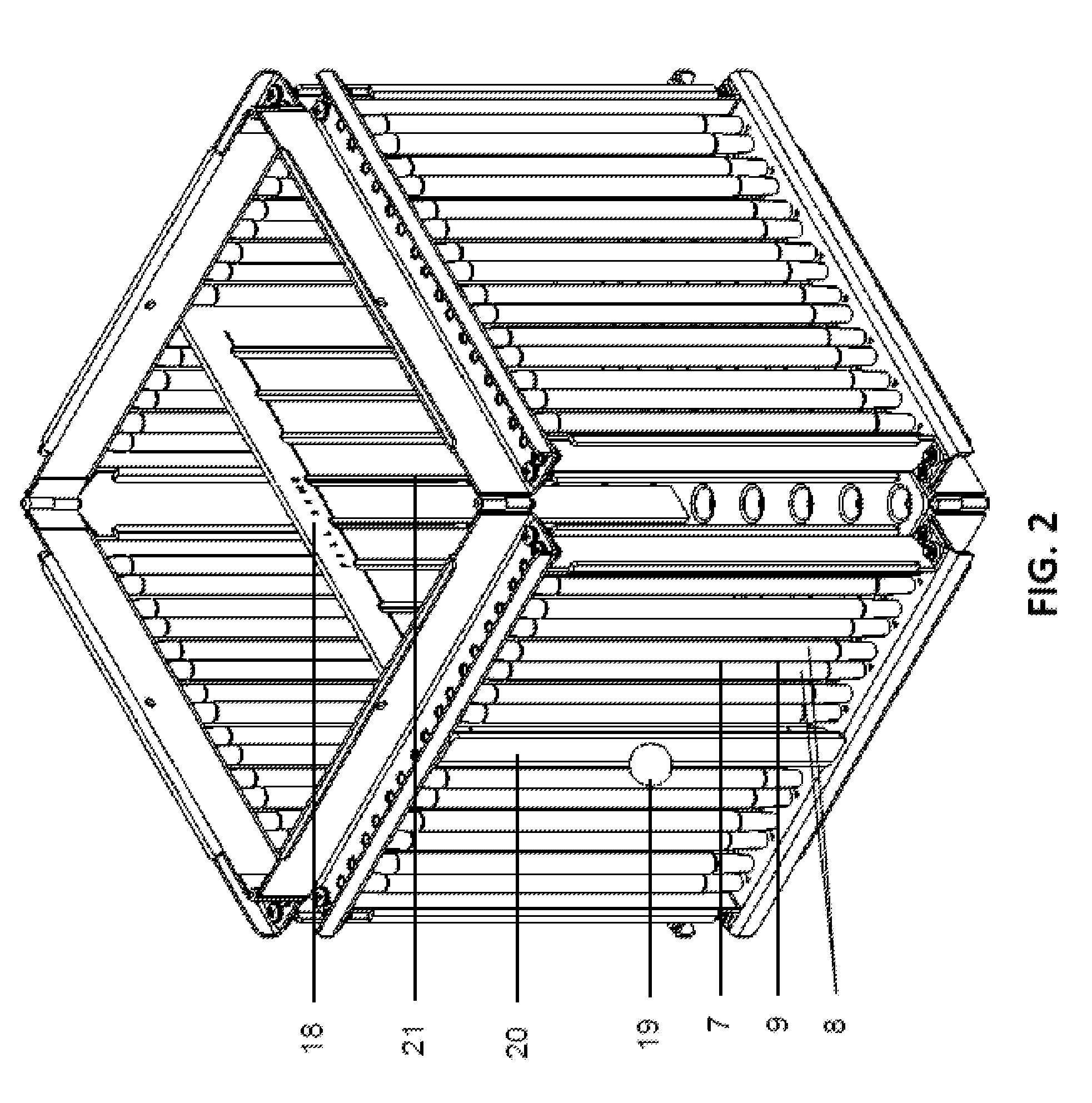Meat cubing and skewering device
a skewer and meat technology, applied in the direction of meat cubing/cutting, meat shaping/cutting, manufacturing tools, etc., can solve the problems of not showing a means, affecting the ability of cutters, and creating significant friction, etc., to achieve wide range of cutting instrument spine thickness, low volume storage, and easy cleaning
- Summary
- Abstract
- Description
- Claims
- Application Information
AI Technical Summary
Benefits of technology
Problems solved by technology
Method used
Image
Examples
Embodiment Construction
[0017]An elevated view of the meat cutting device, as shown in FIG. 1, illustrates all of its major parts. The identical top and bottom plates 1 are made up of an array of evenly spaced apertures 2 that are set off from the inter-aperture plane by a series of conically shaped dimples 3 that surround the apertures 2. The apertures 2 are set above the inter-aperture plane at the top and set below at the bottom. The purpose of the apertures 2 is to permit the insertion of skewers for the making of shish kebobs or Souvlaki. On the bottom plate, the conically shaped dimple 3 surrounding each aperture 2 assists in guiding a skewer head through the relatively narrow aperture. By better controlling the alignment of skewer heads along the bottom, there is less probability of skewer interference with one another and thus less probability of multiple-skewered or non-skewered meat cubes near the bottom of the device. The top and bottom plates 1 also have four vertical walls 4 on their sides. Th...
PUM
| Property | Measurement | Unit |
|---|---|---|
| Angle | aaaaa | aaaaa |
| Angle | aaaaa | aaaaa |
| Length | aaaaa | aaaaa |
Abstract
Description
Claims
Application Information
 Login to View More
Login to View More - R&D
- Intellectual Property
- Life Sciences
- Materials
- Tech Scout
- Unparalleled Data Quality
- Higher Quality Content
- 60% Fewer Hallucinations
Browse by: Latest US Patents, China's latest patents, Technical Efficacy Thesaurus, Application Domain, Technology Topic, Popular Technical Reports.
© 2025 PatSnap. All rights reserved.Legal|Privacy policy|Modern Slavery Act Transparency Statement|Sitemap|About US| Contact US: help@patsnap.com



